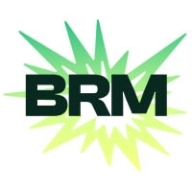

AWS Artifact and BRM are products in the compliance and billing management categories. AWS Artifact has the upper hand in terms of pricing and support, while BRM takes the lead with its advanced features that tech buyers find valuable for the price.
Features: AWS Artifact offers automatic access to compliance-related documents, crucial for regulated industries. It focuses on compliance automation to ease the burden of regulatory requirements. BRM shines with real-time billing and comprehensive invoicing. It emphasizes intricate billing aspects, providing businesses with detailed billing controls.
Ease of Deployment and Customer Service:AWS Artifact is known for its seamless cloud-based deployment with straightforward integration, ideal for businesses seeking easy implementation. BRM may require a more elaborate deployment process but makes up for it with dedicated customer service, appealing to clients needing extra assistance during setup.
Pricing and ROI: AWS Artifact comes with a straightforward pricing model, offering lower initial costs and quick ROI for companies needing compliance documentation. BRM has a higher setup cost, but its advanced billing tools provide strong long-term ROI benefits, making it a valuable option over time for businesses focused on comprehensive billing solutions.
AWS Artifact is your go-to, central resource for compliance-related information that matters to you. It provides on-demand access to AWS' security and compliance reports and select online agreements.
BRM is designed to streamline business resource management by offering a seamless integration of processes and data within organizations, enhancing communication and efficiency.
BRM serves as a comprehensive tool for organizations aiming to optimize their business processes. It offers valuable features that cater to needs such as data management, resource allocation, and process automation. Implementing BRM can lead to improved operational efficiency, better resource tracking, and enhanced decision-making capabilities. While powerful, BRM provides room for improvement in its integration capabilities with third-party systems, offering potential for expanded functionality.
What are the key features of BRM?BRM implementation varies across industries like manufacturing, healthcare, and finance, adapting to the specific process needs. In manufacturing, it helps in effective resource planning and inventory control, while in healthcare, it improves patient data management and service delivery. In finance, BRM aids in financial data analysis and reporting, boosting efficient financial planning.
We monitor all Compliance Management reviews to prevent fraudulent reviews and keep review quality high. We do not post reviews by company employees or direct competitors. We validate each review for authenticity via cross-reference with LinkedIn, and personal follow-up with the reviewer when necessary.